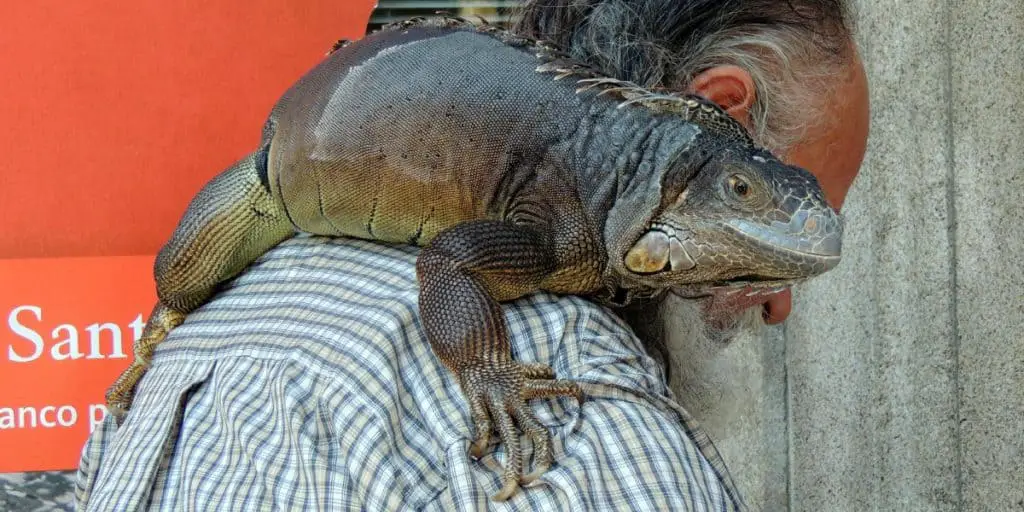Iguanas, in general, are not domesticated animals, and keeping them as pets require care. Although there are many species, green iguanas are the ones that most people keep as pets. It is native to the eastern Caribbean islands and tropical regions of Central and South America.
What is the size of an iguana?
A baby iguana is usually 2.5 to 3.5 inches long and 3.5 to 4.5 ounces in weight after their birth. Younger or juvenile iguanas are 12 to 14 inches long and 1.5 pounds in weight. An adult iguana, on the other hand, can reach up to 7 feet in length and 8.5 pounds in weight.
The male adult iguana has more weight than the female one, which is 8.5 pounds and 6.5 pounds respectively. So, it is important to know the size of your iguana before measuring the space for your pet iguana.
Research shows that unlike wild green iguanas, pet iguanas that are kept in captivity grow up to 6 feet and weigh up to 18 pounds. That’s why pet iguanas are also called “Giant Green Iguanas.”
How much space does a pet iguana need?
The space required to keep a pet iguana at home depends on the size of the reptile. Our research shows that iguanas need plenty of space so that it can fully turn and climb.
If you have a baby or juvenile iguana at home, then you need an aquarium that can accommodate 20 gallons of water. In contrast, if you have an adult iguana, then you will need more space for it. A tank of at least 8 feet high and 12 feet long will do the job.
You can make a customized tank for your baby and adult iguana. For instance, you can use glass, mesh, and wood to build a custom tank. Although you can use glass material, experts suggest it is not good when it comes to ventilation.
All reptiles require an adequate amount of humidity, temperature, and airflow. A glass tank has higher levels of humidity that can cause the growth of fungus and mold, and if you fail to maintain the tank, for example, cleaning and ventilation, your iguana won’t survive.
Besides space, you will have to ensure the optimal temperature in the cage or tank. The optimal temperature levels of your iguana are 80 degrees to 90 degrees Fahrenheit. Likewise, you need to maintain a 70% humidity level in the cage or tank so that the reptile can easily start the process of shedding when required.
What is an ideal iguana cage or tank?
Because iguanas can grow large, you need a bigger enclosure to make them stay comfortably. The ideal enclosure dimensions for your iguana is 6 feet high, 8 feet long, and 3 feet wide. Although this is an ideal size, we recommend you to go for a slightly bigger cage.
If you are lucky enough to live in a hot country, you can keep the cage for at least 12 hours in the open where the animal can receive sunlight. If you aren’t so lucky, ensure that you have appropriate heat and light sources. The reason is that iguanas require ultraviolet (UVB) rays of the sun to process calcium absorption. Otherwise, it can develop serious diseases, such as metabolic bone disease.




